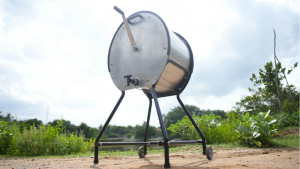E-waste graveyards are found in some of the poorest regions in the world. A photo exhibition titled E-Waste Tsunami aims to highlight the dangers of e-waste pollution and encourage designers to incorporate the final stage of a product’s life cycle into their designs.
Hosted by the Parson’s New School of design, New York, the documentary exhibition consists of photos and video interviews that feature individuals from Delhi, India. These locals filter through insurmountable piles of electronic trash, looking for reusable parts and semi-precious metals to sell. These indirect recyclers melt the plastic casings and use chemicals to strip wires clean. All of these methods are hazardous and toxic.
E-Waste Tsunami aims to bring important questions about recycling and the life cycle of consumer electronics to the fore. Aimed at designers, the exhibition also featured a panel discussion where industry leaders presented alternative designs and imagined best practice scenarios for the e-waste problem.
The idea is that the people on the front line should be assisted through better designs that could help them recycle e-waste better, faster and with fewer health risks.
Rama Chorpash, director of the Industrial Design program at Parsons School Of Design says: “Understanding the interrelation of the ecosystems is key to the design of new products and services that will address and alleviate the e-waste problem.”
“How can industrial design, which plays a major role in creating this problem, be part of its solution?” he adds.










